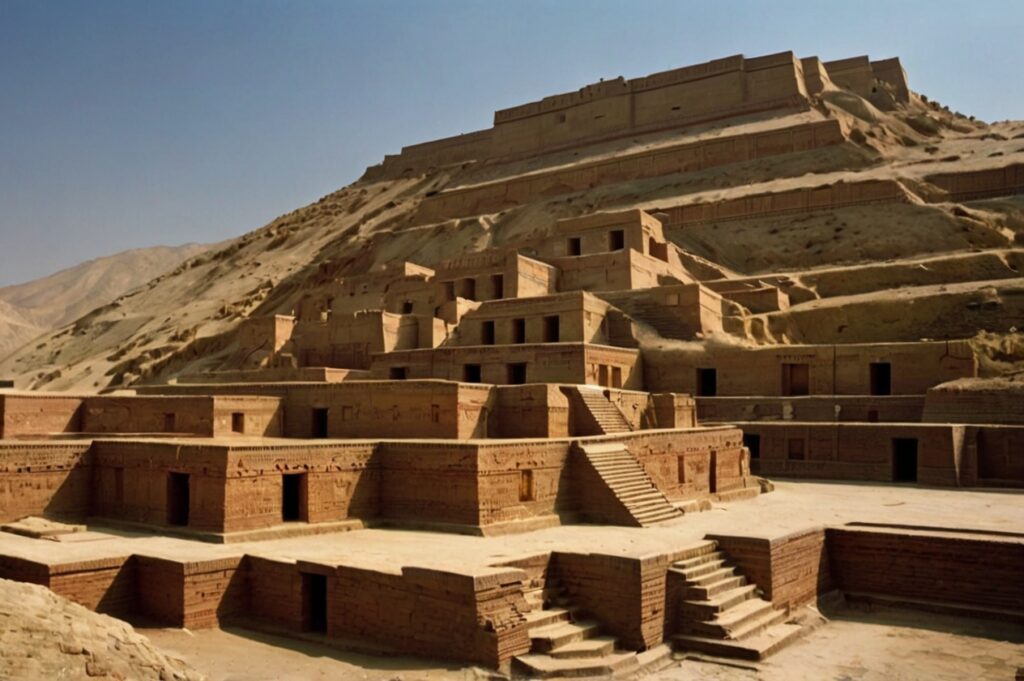
Throughout history, civilizations have risen to incredible heights only to vanish mysteriously, leaving behind ruins and unanswered questions.
These ancient societies were once thriving hubs of culture, technology, and innovation.
In this post, we’ll explore some of the most fascinating ancient civilizations that disappeared without a trace, diving into their achievements, possible reasons for their decline, and the mysteries that endure.
The Indus Valley Civilization
The Indus Valley Civilization, one of the world’s earliest urban societies, flourished around 3300 to 1300 BCE in what is now modern-day Pakistan and northwest India.
Known for its advanced city planning, the civilization boasted well-organized streets, sophisticated drainage systems, and impressive architecture.
Despite their advancements, the Indus Valley cities of Mohenjo-Daro and Harappa were abandoned by 1700 BCE.
The reasons remain speculative, with theories ranging from climate change and shifting rivers to invasions.
According to a study published in Nature Communications, a prolonged drought may have significantly contributed to their decline.
The Maya Civilization

The Maya civilization thrived in Mesoamerica from 2000 BCE to 1500 CE.
Renowned for their achievements in mathematics, astronomy, and architecture, the Maya built iconic structures such as the pyramids of Chichen Itza and developed a complex writing system.
However, between the 8th and 9th centuries CE, many Maya cities in the southern lowlands were mysteriously abandoned.
Scholars attribute this collapse to factors like overpopulation, resource depletion, and prolonged droughts.
Research in Science Advances suggests that deforestation and climate change played a critical role in their downfall.
The Khmer Empire
The Khmer Empire, centered in modern-day Cambodia, was a powerful Southeast Asian civilization from the 9th to the 15th century CE.
Its crowning achievement, Angkor Wat, remains one of the largest religious monuments in the world.
Despite its grandeur, the Khmer Empire declined and eventually vanished.
Historians believe that water management failures, combined with invasions and changing trade routes, led to their downfall.
A study in Proceedings of the National Academy of Sciences highlights how climate variability, particularly severe droughts, may have disrupted their sophisticated hydraulic systems.
The Easter Island Civilization
Rapa Nui, or Easter Island, is famous for its enigmatic moai statues.
The island’s civilization flourished between 1200 and 1600 CE.
The people of Rapa Nui displayed remarkable ingenuity in carving and transporting these massive stone figures.
By the 18th century, however, the population had drastically declined.
Over exploitation of natural resources, deforestation, and societal conflicts are commonly cited as causes.
Recent research published in Nature Ecology & Evolution also suggests that European contact and introduced diseases accelerated the collapse.
The Minoan Civilization

The Minoans, known as Europe’s first advanced civilization, flourished on the island of Crete from around 3000 to 1100 BCE.
They are celebrated for their stunning artwork, extensive trade networks, and the legendary palace at Knossos.
But the Minoan civilization came to a sudden and mysterious end.
While the exact cause is still debated, many experts believe natural disasters played a major role.
The eruption of the Thera volcano (modern-day Santorini) around 1600 BCE likely triggered devastating tsunamis and environmental changes that disrupted their way of life, as supported by research published in Geology.
Thonis-Heracleion
Thonis-Heracleion was once a bustling Egyptian port city and a religious hub, thriving around the 2nd century BCE.
However, it eventually vanished beneath the Mediterranean Sea and remained lost until its rediscovery by underwater archaeologists in 2000.
Studies suggest the city slowly sank due to natural subsidence and rising sea levels.
Today, artifacts recovered from the site reveal glimpses of its rich and vibrant history, offering a fascinating look at a world long forgotten.
Çatalhöyük
Located in present-day Turkey, Çatalhöyük is one of the earliest urban settlements in history, dating back to around 7500 BCE.
This Neolithic community is remarkable for its tightly packed homes, which lacked streets.
Residents traveled between buildings using rooftops—a unique and efficient design for the time.
Despite thriving for thousands of years, Çatalhöyük was abandoned around 5700 BCE.
Scholars believe a combination of environmental challenges, dwindling resources, and shifting social dynamics led to its decline, marking the end of one of the world’s first cities.
The Olmec Civilization

The Olmecs, often called the “mother culture” of Mesoamerica, flourished from 1500 to 400 BCE along the Gulf Coast of Mexico.
They left behind colossal stone heads and other artifacts that showcase their advanced artistic and engineering skills.
The reasons for the Olmec’s disappearance remain unclear, but environmental changes, such as flooding and agricultural challenges, are likely factors.
Evidence from Quaternary International suggests that shifting river patterns may have disrupted their society.
The Atlantis
No discussion of lost civilizations would be complete without mentioning Atlantis.
First described by Plato in his dialogues, Atlantis is said to have been a powerful and advanced society that disappeared beneath the ocean in a single day and night.
While no concrete evidence supports the existence of Atlantis, its legend has captivated imaginations for centuries.
Some theorists suggest it could be inspired by real events, such as the eruption of Thera, while others dismiss it as purely fictional.
Final Thoughts
The disappearance of these ancient civilizations serves as a reminder of the fragility of human societies.
Whether due to environmental factors, resource mismanagement, or external pressures, their declines offer valuable lessons for our modern world.
By studying their histories, we gain insight into resilience, adaptation, and the importance of sustainable practices.



